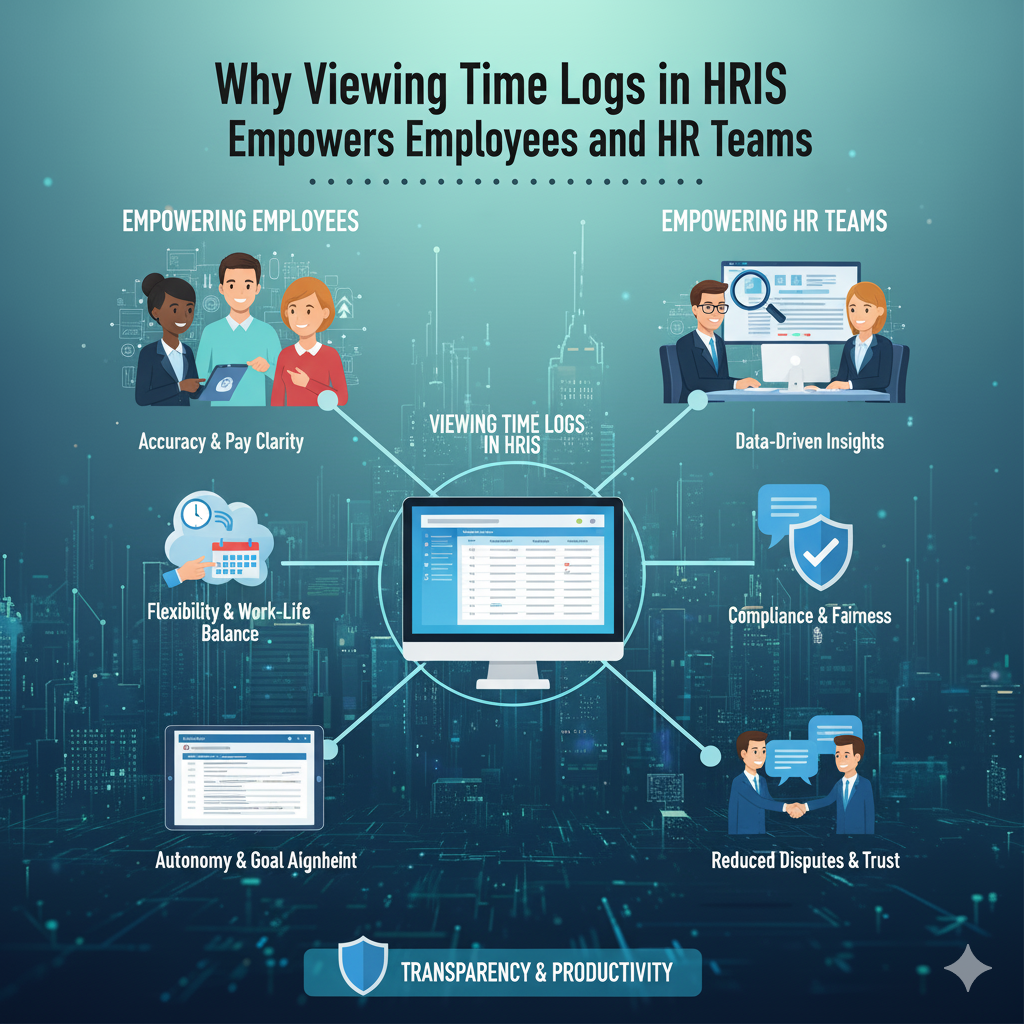In today’s digital workplace, Human Resource Information Systems (HRIS) are more than just tools for payroll and record-keeping. They have become powerful platforms that foster transparency, accountability, and collaboration between employees and HR teams.
One of the most impactful yet often overlooked features of HRIS is the ability to view time logs. By giving employees and HR professionals access to accurate attendance records, organizations can reduce disputes, streamline processes, and build trust.
In this article, we’ll explore why viewing time logs in HRIS empowers both employees and HR teams — and how this visibility translates into greater workplace efficiency.
What Are Time Logs in HRIS?
Time logs are digital records that capture when employees clock in, clock out, and take breaks. Within an HRIS, these logs are automatically recorded and stored, often integrated with payroll, attendance, and performance systems.
When employees and HR teams can view time logs in real time, they gain actionable insights that support:
- Payroll accuracy
- Attendance transparency
- Compliance with labor laws
- Informed decision-making
How Viewing Time Logs Empowers Employees
Transparency and Fairness
Employees often worry about whether their hours are recorded accurately. With HRIS time log viewing, they can:
- Access real-time attendance data
- Verify overtime and undertime entries
- Reduce payroll disputes
This transparency fosters fairness and helps employees feel valued.
Self-Service and Independence
HRIS systems with time log viewing features allow employees to manage their own records without depending on HR staff. They can:
- Check attendance history anytime
- Track their working hours and leave balances
- Request corrections if discrepancies arise
This reduces reliance on HR and gives employees ownership of their data.
Boosted Trust and Engagement
When employees trust that their work hours are logged and visible, they’re more engaged and motivated. A transparent system strengthens employer-employee relationships and enhances overall workplace culture.
How Viewing Time Logs Benefits HR Teams
Reduced Administrative Burden
Without viewing access, HR teams are constantly flooded with requests for attendance verification. Allowing employees to check their own logs:
- Cuts down on repetitive queries
- Frees HR for strategic tasks
- Improves efficiency across departments
Accurate Payroll and Compliance
HR teams benefit from having reliable, accessible time logs to:
- Automate payroll calculations
- Ensure compliance with labor laws
- Generate reports for audits and management reviews
This accuracy minimizes legal risks and prevents costly errors.
Data-Driven HR Decisions
By viewing and analyzing time logs, HR teams can identify trends such as absenteeism, overtime patterns, or scheduling inefficiencies. These insights help HR leaders make smarter, data-driven decisions.
Benefits of Viewing Time Logs in HRIS
✅ Improved payroll accuracy
✅ Greater transparency and trust
✅ Reduced conflicts and disputes
✅ Time savings for HR departments
✅ Enhanced compliance and reporting
Best Practices for Implementing Time Log Viewing
To maximize the impact of this feature, organizations should:
- Educate employees on how to access and interpret their logs.
- Integrate time logs with payroll and leave systems for seamless processing.
- Set clear policies for corrections and disputes.
- Use analytics dashboards for deeper workforce insights.
Final Thoughts
Allowing both employees and HR teams to view time logs in HRIS is more than a convenience — it’s a step toward building a transparent, efficient, and trust-driven workplace.
For employees, it ensures fairness and independence. For HR teams, it reduces administrative strain and ensures compliance. Together, this shared access creates a stronger, more collaborative work environment.
If your HRIS system isn’t fully utilizing time log viewing yet, now is the time to unlock its full potential.

